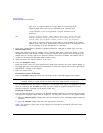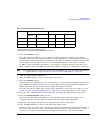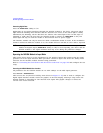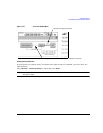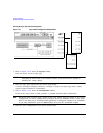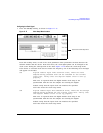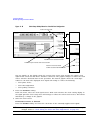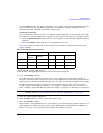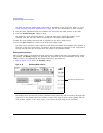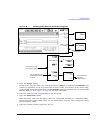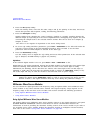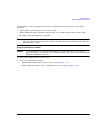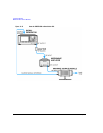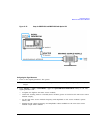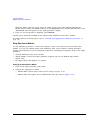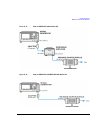
234 Chapter 11
Peripheral Devices
N5102A Digital Signal Interface Module
The skew has discrete values with a range that is dependent on the clock rate. Refer to “Clock
Timing for Phase and Skew Adjustments” on page 215 for more information on skew settings.
8. Enter the skew adjustment that best positions the clock with the valid portion of the data.
9. Press the
Clock Polarity Neg Pos softkey to Neg.
This shifts the clock signal 180 degrees, so that the data starts during the negative clock
transition. This has the same affect as selecting the 180 degree phase adjustment.
10. Make the clock polarity selection that is required for the device being tested.
11. Press the
Return hardkey to return to the first-level softkey menu.
The clock source selection is also reflected in the first-level softkey menu graphic. For example, if
the device is the new clock source, you will see that the frequency reference is now connected to
the DUT and the DUT has an input clock line going to the N5102A module.
Selecting the Data Parameters
This procedure guides you through the data setup menu. Softkeys that have self-explanatory names
(for example, the
Word Size softkey) are generally not mentioned. For more information on all of the
softkeys, refer to the E8257D/67D PSG Signal Generators Key Reference.
1. Refer to Figure 11-19. Press the
Data Setup softkey.
Figure 11-19 Data Setup Menu Location
This softkey menu accesses the various parameters that govern the data received by the PSG. The
status area of the display shows the number of data lines used for both I and Q along with the
clock position relative to the data. Figure 11-20 shows the data setup menu structure.
Accesses the data setup menu



